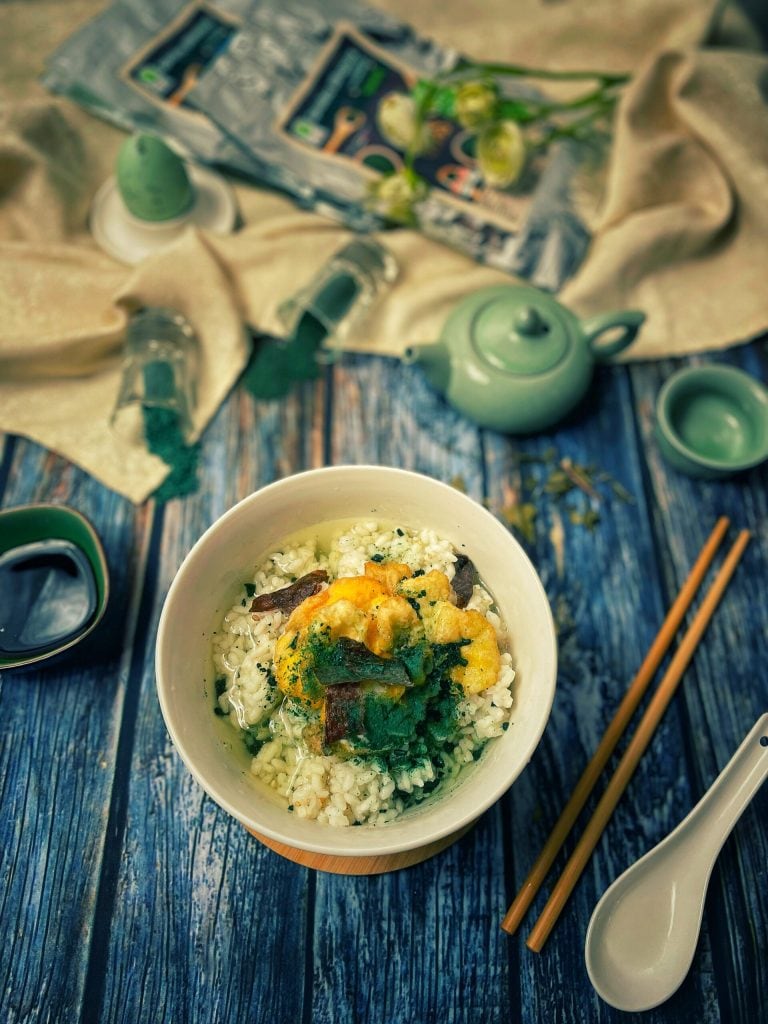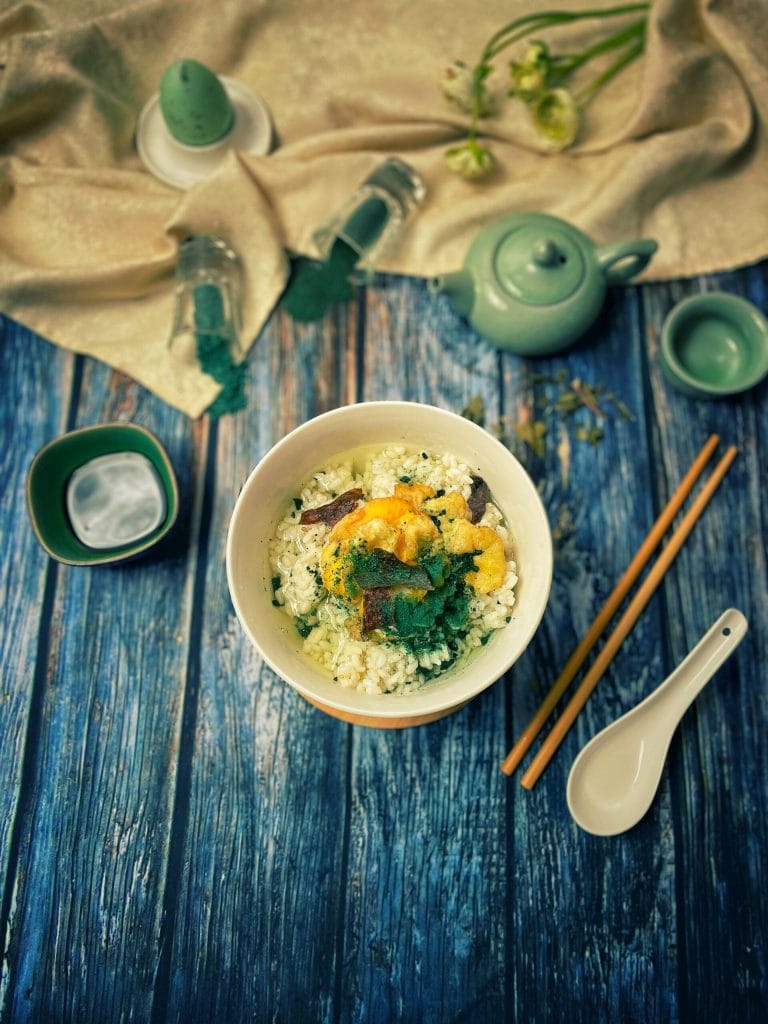Tempura Kakiage Chazuke is the first recipe of the “Golden Globes Menu” dedicated to the winners of the Golden Globe 2025 for the “Build the Menu” segment.
The dish is Japanese, made with tempura kakiage served on gohan rice with Japanese green tea.
Kakiage is a type of tempura made by battering small pieces of fish or vegetables with wheat flour and frying them in cooking oil, served as a final dish in a tempura meal.
It is also commonly prepared in a “tendon” (tempura bowl) or an ochazuke (or chazuke), which is rice soaked in tea.
The oils for frying are: canola oil, salad oil (refined vegetable oil), and sesame oil.
In my case, I chose a tamago kakiage, or egg tempura, served on rice with nori seaweed and spirulina flakes.
The recipe is dedicated to the Golden Globe winner for Best Television Series of the Year: “Shōgun” (also winner for Best Actor and Actress) which, as you know, I loved very much and to which I dedicated another recipe on the blog:

- Difficulty: Medium
- Cost: Cheap
- Rest time: 10 Minutes
- Preparation time: 15 Minutes
- Portions: 1 Person
- Cooking methods: Frying, Steaming
- Cuisine: Japanese
- Seasonality: All Seasons
Ingredients
- 2 egg
- 1 2/3 cups wheat flour
- 1 1/3 cups cold water
- 2 tablespoons Japanese green tea (in leaves)
- 1 cup gohan rice
- 1 teaspoon spirulina flakes
- as needed nori seaweed (shredded)
Tools
- 1 Teapot Japanese
Steps
Boil the egg for 4 minutes then cool it in ice water for 10 minutes.
Prepare the tempura: mix 1 2/3 cups tempura flour with 1 egg and 1 1/3 cups ice-cold water to make the batter.
Stir with wooden chopsticks for no more than a minute using a figure-eight motion.
Keep the batter cold, in the fridge or inside a container with water and ice.Dip the egg, after gently peeling it, in the tempura and fry in sesame oil at a temperature of 356°F.

Prepare the tea by steeping the Japanese tea leaves in boiling water.
Place the gohan rice (see recipe) in the bowl, add the egg, nori seaweed, and spirulina, then add the tea and optionally a teaspoon of soy sauce.


My recommendation is not only to watch the entire wonderful series “Shōgun”, but also to read the wonderful novel from which it is adapted.
FAQ (Questions and Answers)
What is a chazuke?
Chazuke is a dish that primarily consists of rice poured over with tea. It is commonly known as ochazuke.
The custom of eating boiled and dried rice with boiled water or soup (like broth) is common in areas where rice is a staple food, but eating it with tea is rare worldwide. It is said that rice tea porridge was eaten in temples in the Yamato province since ancient times.
From the mid-Edo period, it became common to put ingredients on top of chazuke. The chosen toppings are entirely up to personal preferences and include pickled plums, pickles, salmon, nori seaweed, tsukudani, shiokara, wasabi, cod roe, and salmon eggs or sashimi.
It is said that chazuke originated in the mid-Edo period when bancha and sencha teas became widespread and tea became a luxury item for common people.
Chazuke is a dish that appears in numerous works of various genres (hence its popularity).
In the story “Shimatsu no Gekii” by Kamigata Rakugo, there is a part where the host recommends rice porridge as a way to show true hospitality.
In Kafu Nagai’s “Bokuto Kitan”, which describes the customs of the early Showa period, a prostitute from Tamanoi eats cold rice and boiled sweet potatoes in an aluminum pot, sitting on a brazier.
Numerous depictions exist where she gorges on tea along with sweet potatoes from an aluminum pot and a mountain of pickled radishes.
Moreover, ochazuke appears in the title of a film, such as in the movie “The Flavor of Ochazuke” directed by Yasujiro Ozu in 1952.Why did you dedicate this dish to the Shōgun TV series?
The narrative begins in April 1600.
The Erasmus, a war-armed merchant ship under the Dutch flag, which was to loot the New World and then return home, reaches Japan, and the English pilot along with some survivors of the voyage is captured.
From 1603 to 1868 in Japan is the Edo period.
The namanare or namanari, raw fish wrapped in rice and consumed fresh before the taste deteriorates, during this period is preferred over sushi and its close ancestor narezushi.
Unlike the latter, namarare is considered a dish, rather than just a fermentation method.
In the medieval samurai society, the process of preparing poultry and meat begins to be ritualized. During this period, masters specializing in the art of the knife are recognized, and preparation methods previously limited to simple cutting evolve into true art, while the first schools specializing in the development of kitchen tool skills are born.
The recipe for tempura is introduced in Japan thanks to the work of Portuguese Jesuit missionaries who were particularly active during the 16th century (1549).
Exactly the historical period the TV series deals with, where the Portuguese play an important role in the narrative itself.
VIDEO RECIPE WITH SPIRULINA TEMPURA:
You can also purchase Ethos spirulina online on the Ethos website with my discount code SELENE10

